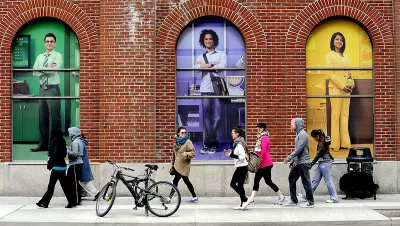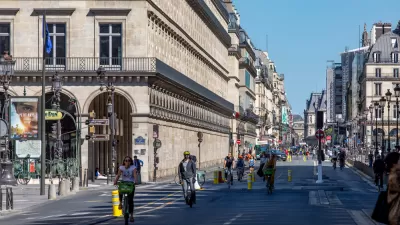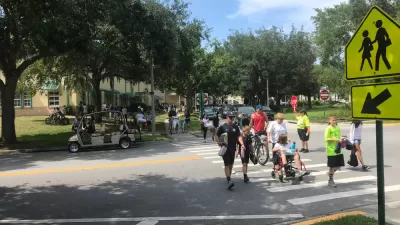A recent article explores the promise—and potential pitfalls—of new technology to support the growing popularity of urban pedestrianism.

According to a recent article by Michael Scott, “the convergence of pedestrianism, technology and the built environment is poised to spark a walkability revolution that promises to yield a meaningful return to people as well as the cities in which they live.”
Describing what he calls the “Age of Mobile Pedestrianism,” Scott surveys some of the apps and ideas that are changing the way that people of all ages engage with their cities.
For instance, Scott quotes Steve Carroll, chief operating officer of RideScout, a mobile app that provides real-time information for getting around on foot or by other alternative forms of transportation: “We’ve been receiving interest from both local governments and businesses that want to provide incentives for their people to become car free. They have an open ear because of traffic congestion and other concerns associated with car-dependent lifestyles.”
Scott also acknowledges the potential pitfalls of pervasive technology, including distracted walkers and, of course, luddites. On the latter point, Scott quotes James Shaffer, president of Streetscapes, Inc.: “While all of the buzz is about smartphones, we must also consider the subset of people who couldn’t care less about technology yet want key information to enhance their walk experience.”
FULL STORY: Smart Cities and the Technology of Walking

Maui's Vacation Rental Debate Turns Ugly
Verbal attacks, misinformation campaigns and fistfights plague a high-stakes debate to convert thousands of vacation rentals into long-term housing.

Planetizen Federal Action Tracker
A weekly monitor of how Trump’s orders and actions are impacting planners and planning in America.

San Francisco Suspends Traffic Calming Amidst Record Deaths
Citing “a challenging fiscal landscape,” the city will cease the program on the heels of 42 traffic deaths, including 24 pedestrians.

Defunct Pittsburgh Power Plant to Become Residential Tower
A decommissioned steam heat plant will be redeveloped into almost 100 affordable housing units.

Trump Prompts Restructuring of Transportation Research Board in “Unprecedented Overreach”
The TRB has eliminated more than half of its committees including those focused on climate, equity, and cities.

Amtrak Rolls Out New Orleans to Alabama “Mardi Gras” Train
The new service will operate morning and evening departures between Mobile and New Orleans.
Urban Design for Planners 1: Software Tools
This six-course series explores essential urban design concepts using open source software and equips planners with the tools they need to participate fully in the urban design process.
Planning for Universal Design
Learn the tools for implementing Universal Design in planning regulations.
Heyer Gruel & Associates PA
JM Goldson LLC
Custer County Colorado
City of Camden Redevelopment Agency
City of Astoria
Transportation Research & Education Center (TREC) at Portland State University
Jefferson Parish Government
Camden Redevelopment Agency
City of Claremont





























